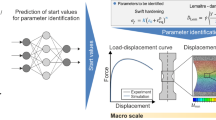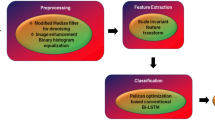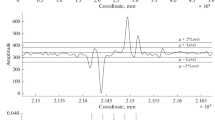Abstract
Within the framework of aging materials inspection, one of the most important aspects regarding defects detection in metal welded strips. In this context, it is important to plan a method able to distinguish the presence or absence of defects within welds as well as a robust procedure able to characterize the defect itself. In this paper, an innovative solution that exploits a rotating magnetic field is presented. This approach has been carried out by a finite element model. Within this framework, it is necessary to consider techniques able to offer advantages in terms of sensibility of analysis, strong reliability, speed of carrying out, low costs: its implementation can be a useful support for inspectors. To this aim, it is necessary to solve inverse problems which are mostly ill-posed; in this case, the main problems consist on both the accurate formulation of the direct problem and the correct regularization of the inverse electromagnetic problem. We propose a heuristic inversion, regularizing the problem by the use of an Elman network. Experimental results are obtained using a database created through numerical modeling, confirming the effectiveness of the proposed methodology.




Similar content being viewed by others
Explore related subjects
Discover the latest articles and news from researchers in related subjects, suggested using machine learning.References
Bowler J (1994) Eddy current interaction with an ideal crack: I. The forward problem. J Appl Phys 75:8128–8137
Cacciola M, Calcagno S, Laganá F, Megali G, Pellicanó D, Versaci M, Morabito F (2009) Advanced integration of neural networks for chracterizing voids in welded strips. Lect Notes Comput Sci Artif Neural Netw 5769:455–464
Chen S, Zhang Z (2011) Temperature prediction of friction stir welding based on bayesian neural network. Appl Mech Mater 48–49:1208–1212
Draper N, Smith H (1998) Applied regression analysis. Wiley, New York
Elman J (1990) Finding structure in time. Cognitive 15:179–211
Fratini L, Buffa G, Palmeria D (2009) Using a neural network for predicting the average grain size in friction stir welding processes. Comput Struct 87:1166–1174
Grimberg R, Radu E, Mihalache O, Savin A (1997) Calculation of the induced electromagnetic field created by an arbitrary current distribution located outside a conductive cylinder. J Phys D Appl Phys 30:2285–2291
Kohavi R (1995) A study of cross-validation and bootstrap for accuracy estimation and model selection. In: Proceedings of the 14th international joint conference on artificial intelligence, pp 1137–1143
Kurková V (1992) Kolmogorov’s theorem and multilayer neural networks. Neural Netw 5:501–506
Lewis AM (1992) A theoretical model of the response of an eddy-current probe to a surface-breaking metal fatigue crack in a flat test piece. J Appl Phys 25:319–326
Rodger D, Leonard P, Lai H (1992) Interfacing the general 3d a–ψ method with a thin sheet conductor model. IEEE Trans Magn 28:1115–1117
Savin A, Grimberg R, Mihalache O (1997) Analytical solutions describing the operation of a rotating magnetic field transducer. IEEE Trans Magn 33:697–701
Takagi T, Hashimoto M, Fukutomi H, Kurokawa M, Miya K, Tsuboi H (1994) Benchmark models of eddy current testing for steam generator tube: experiment and numerical analysis. Int J Appl Elect Mater 4:149–162
Takagi T, Huang H, Fukutomi H, Tani J (1998) Numerical evaluation of correlation between crack size and eddy current testing signals by a very fast simulator. IEEE Trans Magn 34:2582–2584
Trevisan F, Kettunen L (2004) Geometric interpretation of discrete approaches to solving magnetostatics. IEEE Trans Magn 40:361–365
Tsuboi H, Misaki T (1987) Three dimensional analysis of eddy current distribution by the boundary element method using vector variables. IEEE Trans Magn 23:3044–3046
Wei H, Kovacevic R (2011) A neural network and multiple regression method for the characterization of the depth of weld penetration in laser welding based on acoustic signatures. J Intell Manuf 22:131–143
Weisstein E (2008) Euler angles. mathworld, a wolfram web resource. Available online http://www.mathworld.wolfram.com/EulerAngles.html
Yufen G, Cheng X, Yu S, Ding F (2010) Study on bpnn based welding joint properties soft sensing method. In: Proceedings of the 6th international conference on natural computation (ICNC), pp 1865–1868
Author information
Authors and Affiliations
Corresponding author
Rights and permissions
About this article
Cite this article
Cacciola, M., Megali, G., Pellicanó, D. et al. Elman neural networks for characterizing voids in welded strips: a study. Neural Comput & Applic 21, 869–875 (2012). https://doi.org/10.1007/s00521-011-0609-3
Received:
Accepted:
Published:
Issue Date:
DOI: https://doi.org/10.1007/s00521-011-0609-3
Keywords
Profiles
- Francesco Carlo Morabito View author profile




